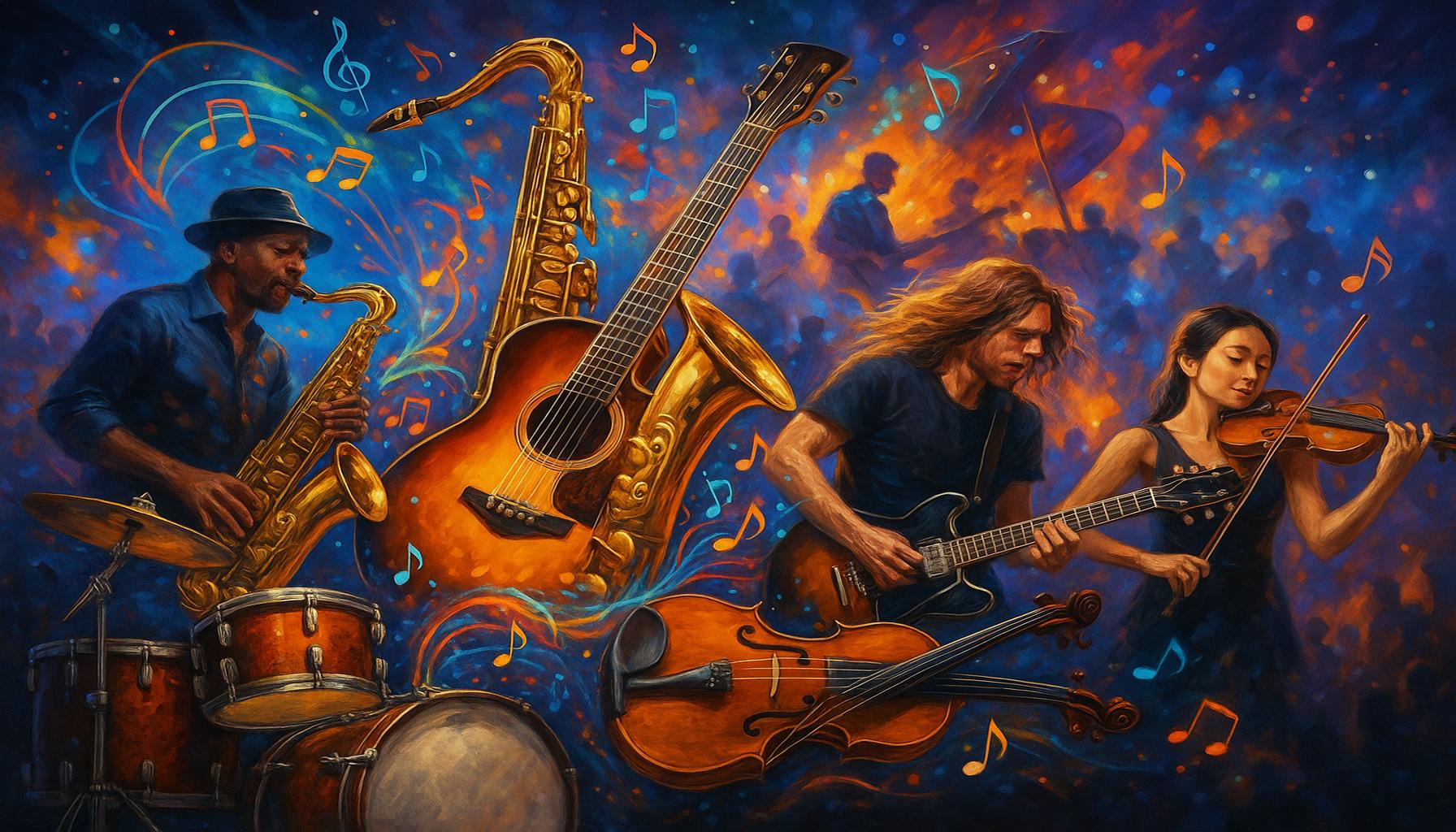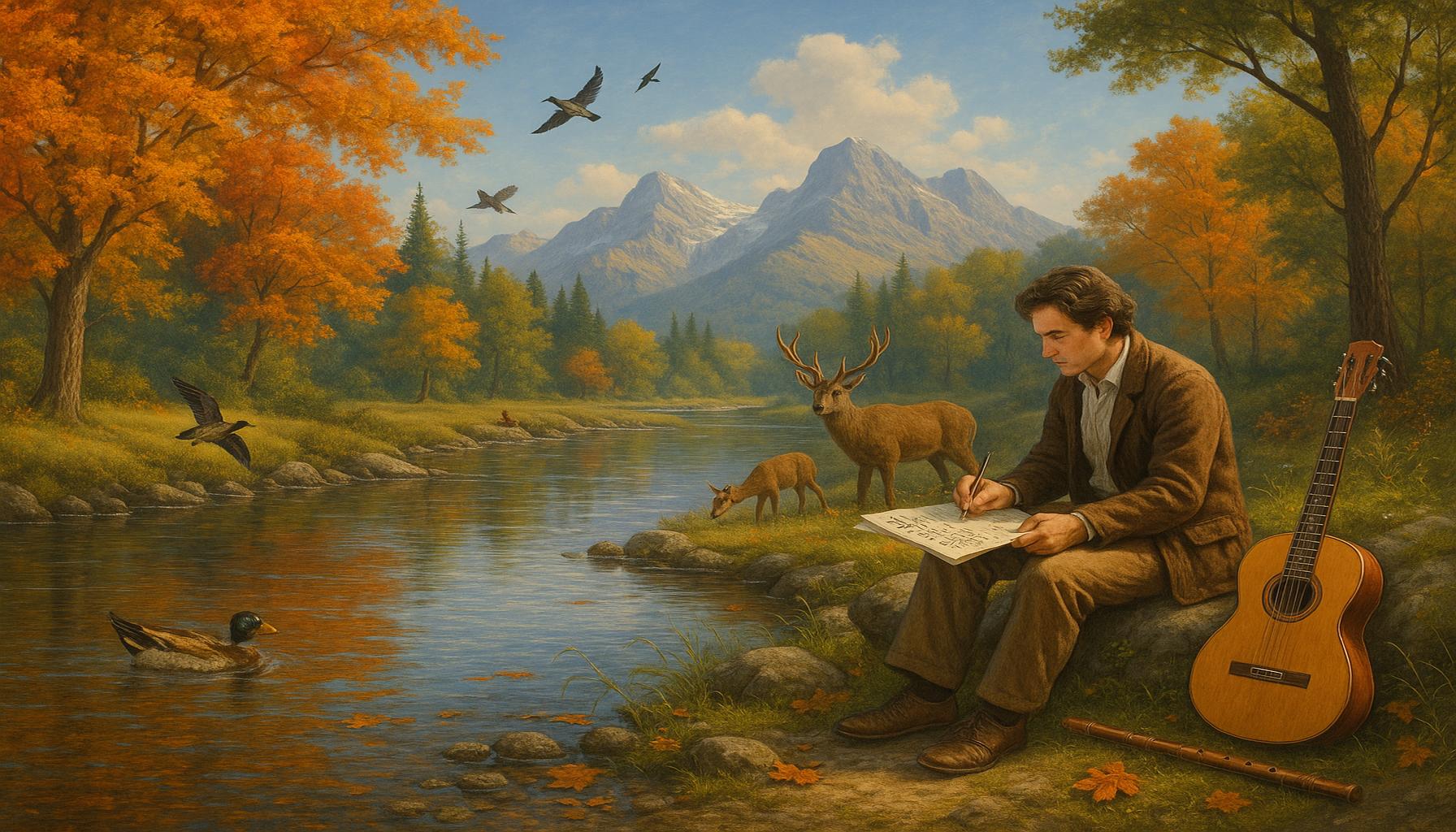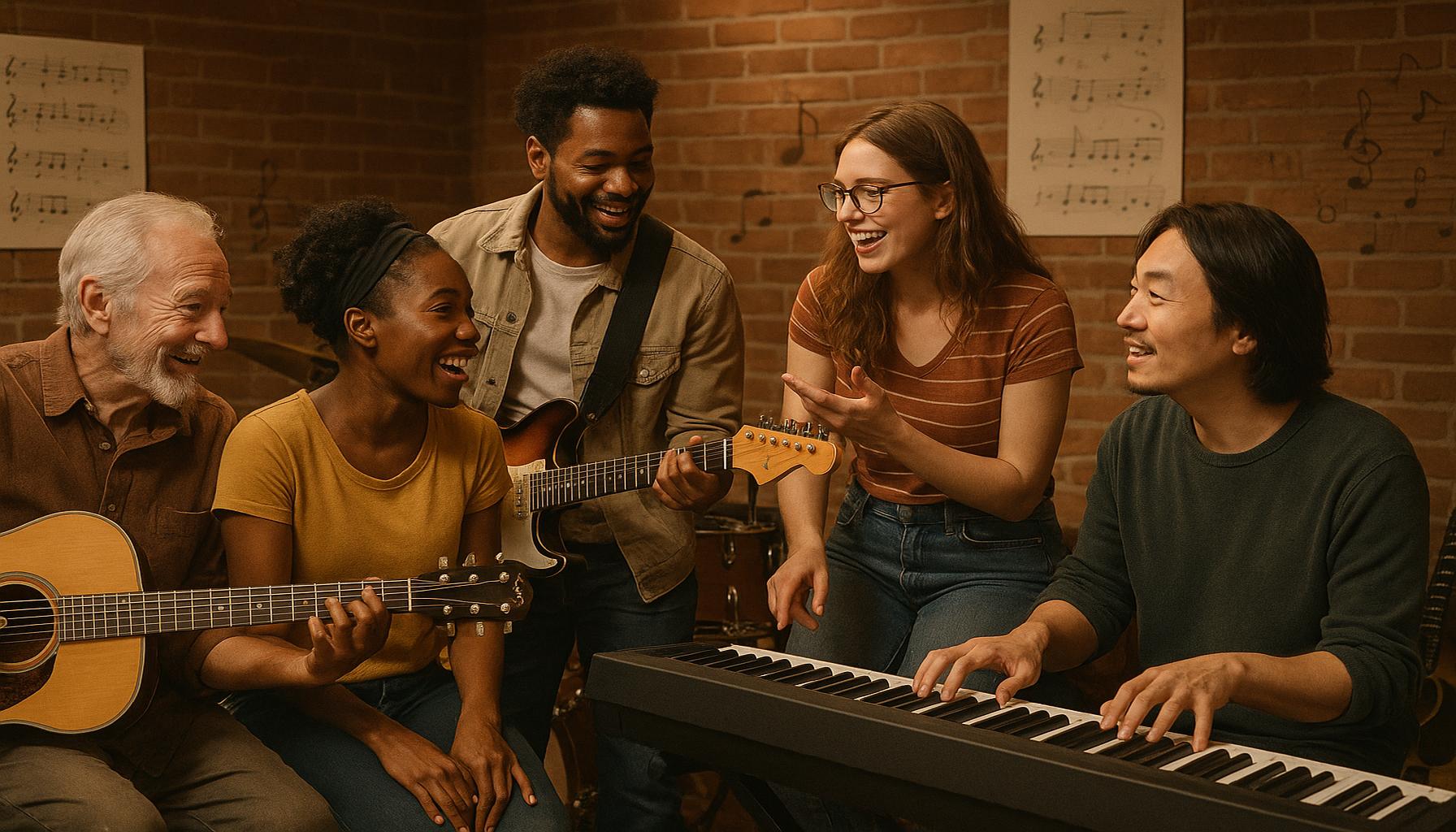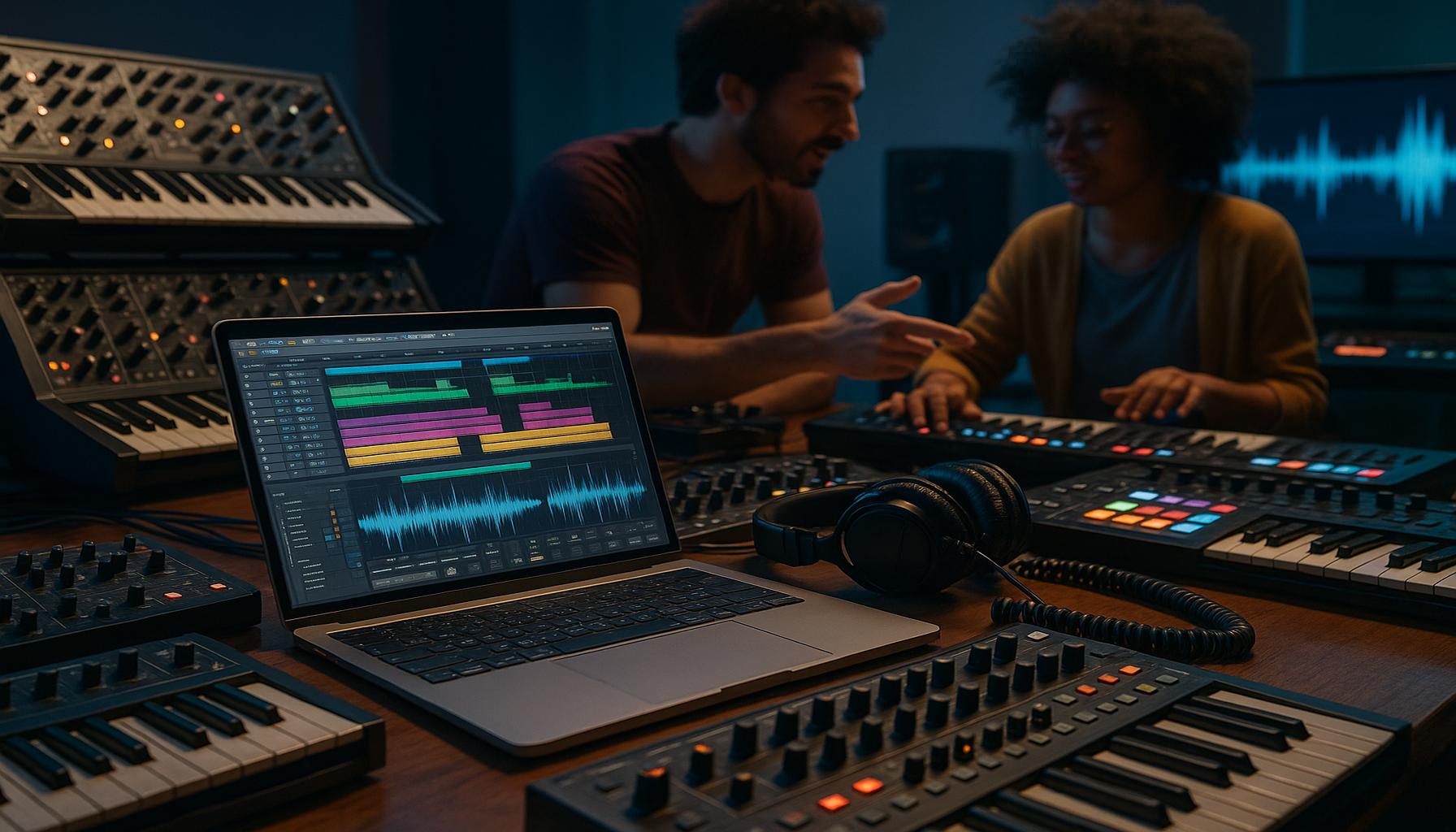Mixing Genres: The Art of Creating New Sounds Through the Fusion of Musical Styles

The Evolution of Music Genres
The landscape of modern music is a dynamic tapestry woven from various genres, each influencing and reshaping one another. Artists are increasingly exploring the boundaries of sound, leading to the rise of genre-blending tracks that captivate global audiences. This evolution has resulted in the emergence of innovative beats and styles that challenge traditional notions of music. From live performances to streaming services, listeners are exposed to an array of sounds that push them to re-evaluate their musical tastes and preferences.
Consider these exciting genre fusions:
- Hip-hop meets Jazz: Artists like Robert Glasper are redefining jazz by infusing it with hip-hop elements. Glasper’s albums, such as *Black Radio*, showcase smooth transitions between improvisational jazz and the rhythmic storytelling of hip-hop, creating a sound that appeals to fans of both genres. His collaborations with artists like Erykah Badu and Common further demonstrate how this fusion can lead to fresh interpretations of music that resonate deeply with diverse audiences.
- Rock and Electronic: Bands such as Linkin Park successfully merged rock with electronic music, creating a unique sound that can be heard in albums like *Hybrid Theory*. By incorporating synthesizers and programmed beats into their rock foundation, they attracted listeners beyond the traditional rock demographic. This genre-blending allowed them to produce tracks that not only topped charts but also influenced a generation of musicians exploring similar fusions.
- Country and Pop: The crossover of artists like Kacey Musgraves has blurred the lines between country and mainstream pop music. Musgraves’ album *Golden Hour* includes catchy hooks and pop production techniques while retaining country storytelling elements. This blend appeals to fans of both genres and has opened doors for other artists looking to experiment with their sound.
These fusions not only expand an artist’s reach but also create pathways for cultural exchange. Each mixture tells a story, reflecting diverse backgrounds, experiences, and influences that resonate with audiences around the world. For instance, the incorporation of Latin rhythms into pop music, as seen with artists like J Balvin and Bad Bunny, brings Latin culture to the forefront of mainstream music in the U.S., further showcasing the benefits of genre fusion.
As we delve deeper into the art of mixing genres, we’ll uncover the strategies that musicians use to craft new sounds. This includes not only the blending of musical techniques but also the innovative use of technology in the production process. The cultural significance behind their creations highlights an era where traditional boundaries are continually tested, creating an exciting future for music. Genres are no longer confined to their traditional labels, allowing artists to express their identities more freely through the beauty of musical fusion.
DISCOVER MORE: Click here to dive into the world of street photography

Exploring the Techniques Behind Genre Fusion
In a world where music is at the heart of cultural expression, mixing genres has become a fundamental part of artistic innovation. Musicians are not only merging disparate sounds but are also employing a variety of techniques to create captivating new pieces that resonate with diverse audiences. The intricate art of combining genres requires a keen understanding of musical elements such as rhythm, melody, harmony, and texture. Let’s explore some of the methods that artists utilize in their genre-blending journeys.
One popular technique in genre fusion is the use of sampling, which involves taking snippets of existing recordings and incorporating them into new music. This practice not only adds richness to a composition but also pays homage to the original artists. Notable artists like Kanye West have mastered this technique, using samples from soul and funk tracks in his hip-hop productions, resulting in a unique sound that has won numerous awards and accolades.
Another approach is the use of cross-genre instrumentation. By utilizing instruments typically associated with one genre in a different context, artists can shape distinct soundscapes. For example, in her music, singer-songwriter Hozier often blends folk guitar rhythms with electric blues elements, creating an atmospheric experience that transcends traditional genre boundaries. Similarly, the incorporation of traditional instruments into modern pop—such as the banjo in a pop hit—demonstrates the imaginative potential of genre fusion.
Collaboration among artists from different backgrounds also plays a significant role in exploring new musical territories. By working together, musicians can share their expertise and cultural influences, leading to groundbreaking combinations of styles. Here are a few noteworthy collaborations that exemplify this practice:
- Lady Gaga and Tony Bennett: Their duet albums have intricately weaved together pop and jazz, showcasing how elements from both genres can coexist beautifully.
- Rihanna and Calvin Harris: This partnership created a series of dance-pop hits, proving how electronic music can elevate pop to new heights, making it a staple of the summer party playlist.
- Shakira and Wyclef Jean: Their hit “Hips Don’t Lie” seamlessly integrated elements of reggaeton, hip-hop, and Latin music, reflecting a fusion that defined an entire era of music.
As technology continues to evolve, it further facilitates the blending of genres. The rise of digital audio workstations (DAWs) has democratized music production, allowing burgeoning artists to experiment with different sounds without the need for a full recording studio. Many musicians are now using these tools to layer beats, create harmonies, and manipulate sounds in ways that were previously unimaginable. This technological innovation helps to fuel the ongoing journey of musical experimentation and expression.
In conclusion, the art of mixing genres is not merely about haphazard combinations; it is a conscious practice that requires skill, creativity, and a deep appreciation for cultural exchange. As artists continue to redefine their sounds, they invite audiences to explore an ever-expanding musical universe that transcends traditional definitions and celebrates diversity in artistry.
| Genre Fusion Examples | Key Attributes |
|---|---|
| Jazz-Rock | Combines improvisational jazz elements with rock’s energy, creating complex rhythms. |
| Reggaeton | Blends Latin rhythms with hip-hop, resulting in infectious beats that dominate dance floors. |
| Country Rap | Merges storytelling from country with rap’s lyrical delivery, appealing to diverse audiences. |
| Classical Crossover | Fuses classical music structures with contemporary pop, enriching both genres. |
Combining distinct musical styles can lead to innovative genre fusions that challenge conventional boundaries. For example, **Jazz-Rock** introduces listeners to intricate improvisation paired with the drive of rock music, resulting in a vibrant soundscape. On the other hand, **Reggaeton** is a prime example of how Latin rhythms can dynamically intertwine with hip-hop elements, capturing listeners around the world and securing its place on global charts.Notably, the emergence of **Country Rap** showcases how storytelling in country music aligns with hip-hop’s rhythmic cadence, creating an unexpected yet authentic auditory experience. Additionally, the **Classical Crossover** movement reimagines classical compositions, infusing them with modern sensibilities that attract new audiences, thus proving that the fusion of genres not only cultivates creativity but also broadens the reach of music. Each genre helps to build a unique narrative, further enriching the listener’s experience and encouraging exploration of new sounds.
DIVE DEEPER: Click here to discover the art of storytelling
The Role of Cultural Influences in Genre Fusion
As artists engage in the fusion of musical styles, cultural influences play a pivotal role in shaping their creations. Music is not created in a vacuum; it is intrinsically tied to the cultural contexts from which it emerges. This intersection of different backgrounds and traditions breeds a rich tapestry of sound that captivates listeners and pushes the boundaries of creativity. One striking example is the emergence of Afrobeats, a genre that has gained global popularity by incorporating elements of traditional African music, dancehall, and pop. Artists like Burna Boy and Wizkid have brought Afrobeats to the forefront of the international music scene, proving how cultural heritage can be effectively woven into contemporary sounds.
Moreover, genres such as blues, which originated from the African American experience, have found their way into countless music styles, from country to rock. The resonance of the blues can be heard in the works of artists like Eric Clapton, who blends blues with rock, creating a sound that appeals to a broad audience while respecting its roots. The chilling guitar riffs and soulful lyrics exemplify how the music can transcend cultural lines, making it a crucial component of genre-blending.
Collaboration between cultures is not limited to mainstream music; independent artists worldwide create unique fusions that deserve recognition. For instance, the global indie music scene has seen the emergence of bands and artists who blend indigenous sounds with modern instrumentation. Artists like Rupi Kaur fuse spoken word poetry with modern hip-hop beats, creating an emotionally charged experience that invites conversation about identity and tradition. Similarly, Thievery Corporation draws from a variety of influences including reggae, dub, and Indian classical music to create a sound that is both eclectic and unifying.
The impact of cultural and global influences is further enhanced by the rise of social media platforms, where artists can directly share their music with a global audience. This accessibility fosters cross-cultural collaborations that may never have been possible in earlier decades. Online platforms such as TikTok and Instagram allow artists from different genres and backgrounds to collaborate, resulting in the rapid sharing of ideas and musical innovations. Viral challenges often lead to unique genre fusions, like the recent trend of K-pop artists adopting elements from hip-hop and electronic dance music to create catchy songs that resonate internationally.
Furthermore, the influence of world music has been increasingly evident in popular Western genres. Just take a look at artists like J Balvin, who have brought reggaeton into the mainstream, contributing to a shift in the soundscape of the pop music genre. Collaborations with artists like Beyoncé on the remix of “Mi Gente” show how powerful the amalgamation of different cultural sounds can lead to chart-topping hits.
As the music landscape continues to evolve, the potential for genre fusion remains limitless. By embracing a multitude of influences and techniques, artists are challenging traditional notions of music categorization, inviting listeners to engage with a more inclusive and diverse sound experience.
Dive deeper: Click here to discover how crafting can enhance your mental well-being
Conclusion: The Future of Musical Fusion
In conclusion, the art of mixing genres represents a vibrant evolution in the music industry, demonstrating that creativity knows no bounds when cultural influences converge. The emergence of new genres, such as Afrobeats and the continued resonance of blues across different musical landscapes, serves as evidence of the dynamism these fusions can create. As artists draw inspiration from diverse backgrounds, they not only pay homage to their roots but also craft sounds that resonate with a global audience. This evolution is not just a trend; it is a radical reshaping of the music we consume and enjoy.
The role of technology and social media cannot be understated; platforms like TikTok have become catalysts for creativity, allowing artists to experiment and collaborate across cultural lines in real-time. The cross-pollination of styles enables listeners to experience a more eclectic mixture of sounds, broadening their musical horizons. As we celebrate these innovations, we must also acknowledge the importance of honoring cultural origins while embracing contemporary innovations.
Looking forward, the future of genre fusion holds immense potential. As artists continue to explore and blend different musical styles, we can expect the emergence of even more unique sounds that challenge traditional categorizations and foster deeper connections among listeners. The journey of creating new music is an evolving narrative, inviting everyone to delve into this exciting world of musical innovation. For music lovers, the next hit might be just around the corner, waiting to be discovered.


